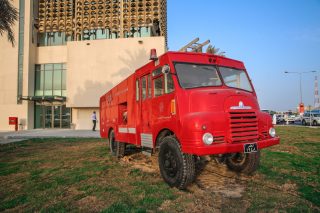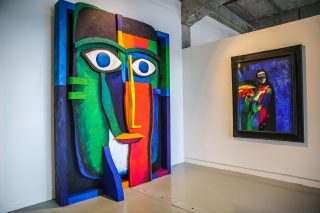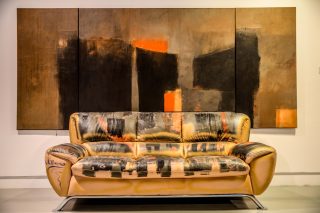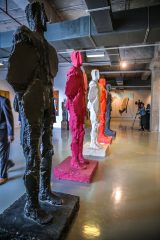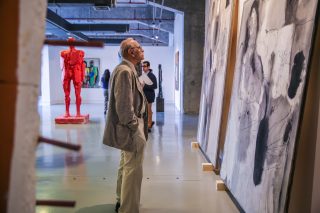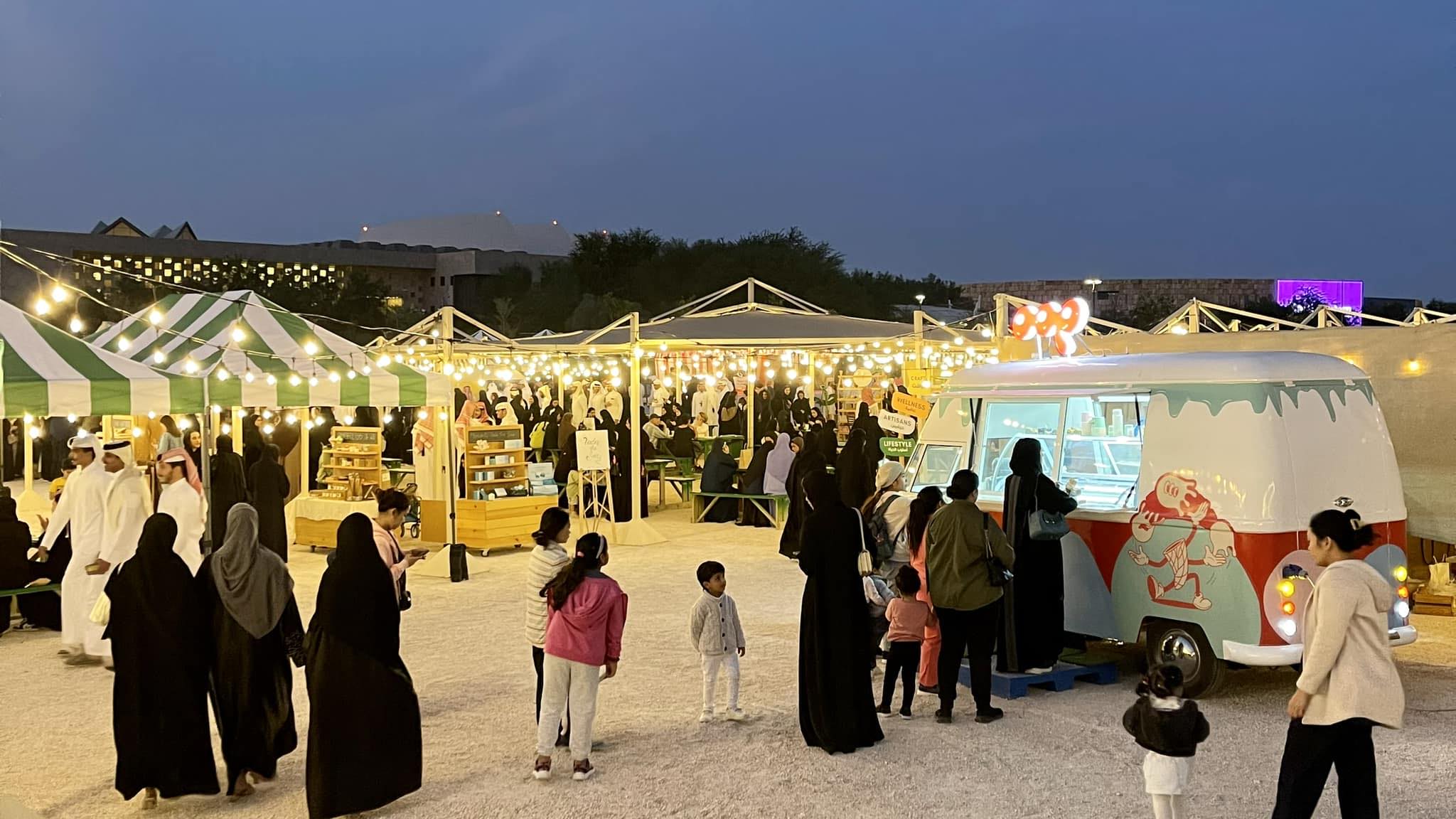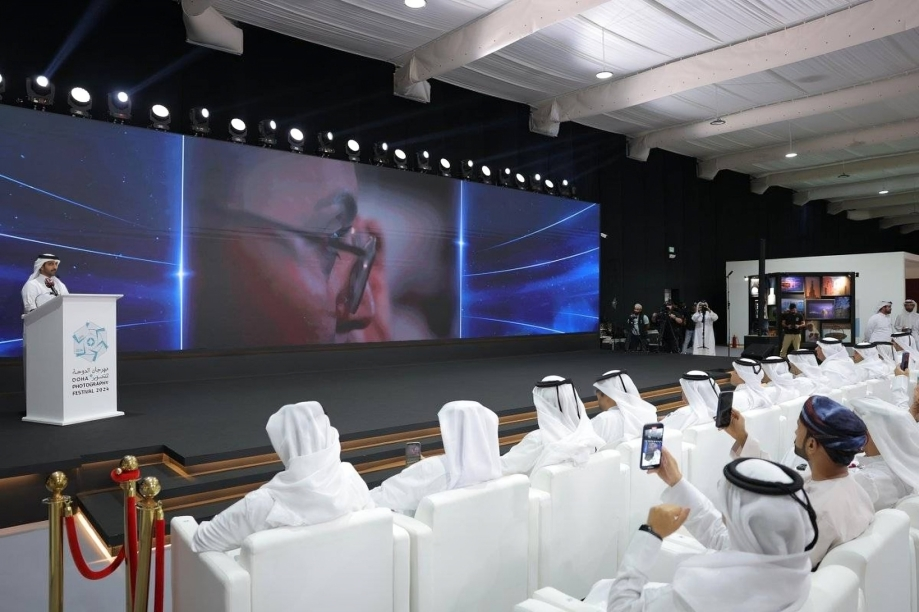All photos by Chantelle D’mello
In a star-studded event, several of the local art scene’s biggest names gathered at the repurposed Civil Defense building in Wadi Al Sail yesterday evening for the opening of the newly renovated Doha Fire Station and its inaugural 555 exhibition.
Among those who attended the opening was Sheikha Al Mayassa bint Hamad Al Thani, chairperson of Qatar Museums. In a statement, she hailed the development as a crucial cultural event.
“Arts, creativity and heritage plays a vital role in the development of our country, supporting the pillars of our national vision. Today’s opening of the Fire Station marks an important milestone towards this, highlighting just how much the art community is flourishing as well as providing the ideal support to the next generation of cultural producers.
As a hub for creative exchange, the Fire Station will help inspire an indigenous culture of creativity and innovation in Qatar. I’m incredibly proud of what’s been achieved by the team to date, and excited to see what comes next.”
Building and exhibition
While the facade of the old Civil Defense building has been left untouched – symbolic red fire pole and all – the interior has been stripped and repurposed to create galleries, art spaces, and studios with a raw, industrial and minimalist vibe.

According to the center’s director Hala Al Khalifa, additional care was taken to preserve the original form of the fire station tower outside, which will be used as a way for artists and management to broadcast messages to the public. An original fire truck is also parked outside.
The ground floor serves as a gallery space, where the current 555 exhibition – a nod to the “999” emergency line for fires in Qatar – is hosted.
The exhibition pays homage to Sheikh Hassan bin Mohammed bin Ali al Thani, QM’s vice president, who started a decade-long residency program that began in 1995. 555 features several works by Iraqi artists Dia Azzawi, Ismail Fattah and Ismail Azzam, among others.
Noted for their unique styles across mediums like plaster, canvas, and wood, the artists lauded the initial program for its flexibility.
“It came at a time where most galleries wouldn’t allow us to exhibit such large scale paintings or sculptures. In a contemporary museum, there are rules about how big a painting can be, how big a sculpture can be, and Sheikh (Hassan’s) residency program, which was originally held in a villa in Madinat Khalifa, allowed us to continue our art without these boundaries,” said Azzawi, who has several pieces on display.
The works of other large-scale artists like the deceased Iraqi sculptor Ismail Fattah, whose large five-piece sculpture of human-like figures forms one of the defining pieces of the exhibition, are also on display.
Artists in residence
The building’s other floors are dedicated to 20 studio spaces for artists in residence, and four others reserved for visiting international artists who will attend the program for a few months at a time.
Modeled after Sheikh Hassan’s program, the residency is scheduled to commence in September this year.

It will span a period of nine months and include artists from a range of different disciplines, including art, photography, design, architecture and other fields.
So far, the program, which is currently only open to local Qatari artists and residents of Qatar, has received some 150 applications. Regional artists will be able to apply for spots at a later date.
The goal is to allow novice or mid-level artists to interact with and be mentored by established mavens of the art world.
Additionally, artists chosen to be part of the residency program will also have access to museums, special exhibitions, lectures and curators from across the world, via QM.
When it opens this fall, the second phase of the Fire Station building, dubbed the “annex,” will contain workshop spaces, cafes, restaurants, an art supply shop and a cinema.
Thoughts?


